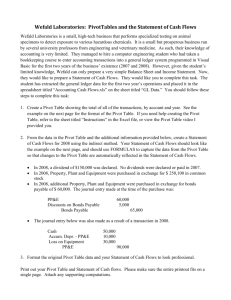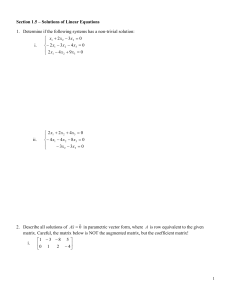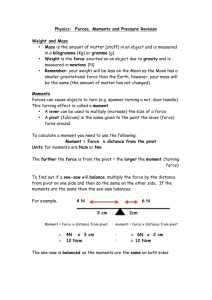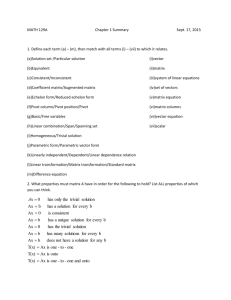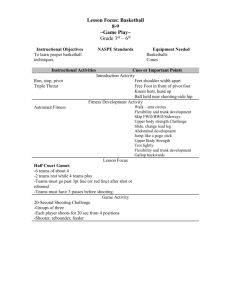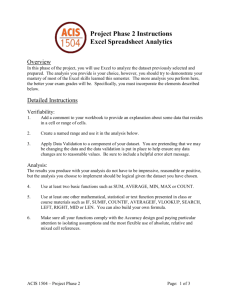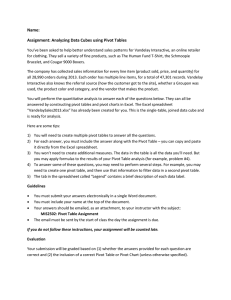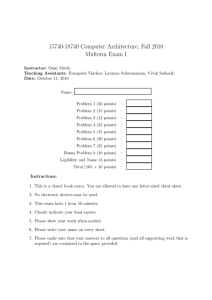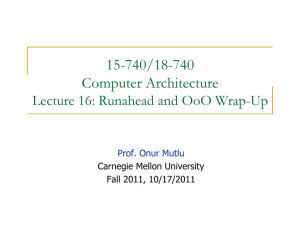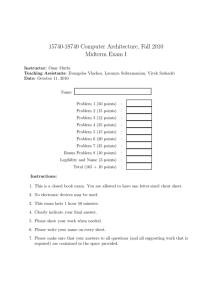+pptx
advertisement
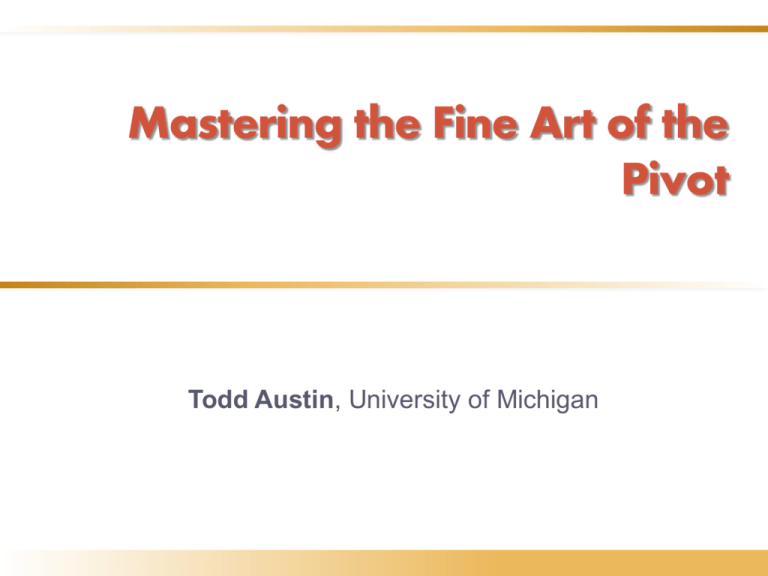
Mastering the Fine Art of the Pivot Todd Austin, University of Michigan Perspectives on Failure If you're not failing every now and again, it's a sign you're not doing anything very innovative. 2 Rule-Breaking Research • A rule-breaking approach to research is effective and engaging • Find a venerable rule and break it however possible • E.g., DIVA – designs must be bug-free to launch • E.g., CDI – programs need indirect jumps to implement calls/returns/dll’s • The “rules” create artificial barriers that hide good ideas • You will often find yourself on very fertile ground • You will more fully engage your community • One half will think your crazy idea will never work • One half will be intrigued (with your crazy idea) • A rule-breaking approach is more prone to failure • Often the outcome of the work is a deeper understanding of why the rule you broke should never be broken • Even when the research is successful, it can be very difficult to publish 3 Working Through Failures • Step #1: the failure • Essentially, the hypothesis that you have been working toward is incorrect • Step #2: the enlightenment • Assess why your hypothesis is incorrect • Step #3: the pivot • Piv·ot /ˈpivət/ - turn on or as if on a swivel • Explore how you can use this new understanding to reach your goal • Or, reach a new goal with this new understanding 4 The Downside of Failure • Let’s face it, failure really sucks • Try to stay focused on the bigger picture and eventual possible payoffs • Be resilient, and be ready to pivot • Most of my top-cited papers are in MICRO, rejected out of ISCA • It is more difficult to publish negative results • Not true for all research communities, e.g., life sciences • WDDD and NOPE are welcome additions to computer architecture • There is a fundamental tension between high-risk failure- prone research and PhD students • PhD students need to make steady progress toward a PhD degree • Often, I will “skunk work” my new ideas with undergraduate students 5 Case #1: Discovering Runahead • The failure: Attempting to show that simulators that don’t model mispeculation are overestimating performance • These simulators underestimate performance • The enlightenment: Executing the mispeculation path (runahead) provides significant performance advantages as it warms up the caches • The pivot: Years later, using this same idea to develop the DIVA runtime checker, which uses runahead ideas to keep the checker processor very simple 6 Case #2: Cache-Conscious Data Placement • The failure: Attempting to improve D-cache performance by reordering data in memory for better spatial/temporal locality • Extremely difficult for the compiler to improve upon natural data layout • The enlightenment: Programmers co-place logically related data, leading to significant spatial/temporal locality • Randomly ordered data reduces cache performance by 20-30% • The pivot: Reimagine the placement algorithm to only make highly reliable placement improvements over natural layout • Eventually leading to a 24% improvement in cache performance, and my first ASPLOS paper! 7 Additional Advise for Graduate Student • Getting papers published • Important tip: assume your paper will never be read • Corollary: write your paper so that the i) abstract, ii) intro, iii) figures and well-detailed captions, and iv) conclusion transmit the key ideas • Approach meshes well with the highly demanding review process • Getting the word out is critical to an idea’s success • Be an evangelist for your project • Name your project so the community can talk about it 8 Questions or Comments? ? ? ? ? ? ? ? ? ? ? ? ?

